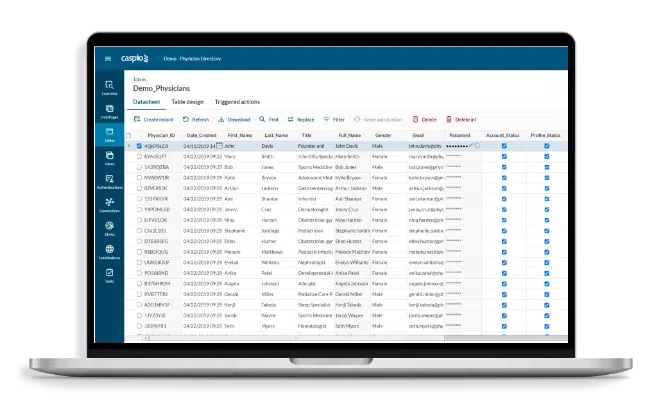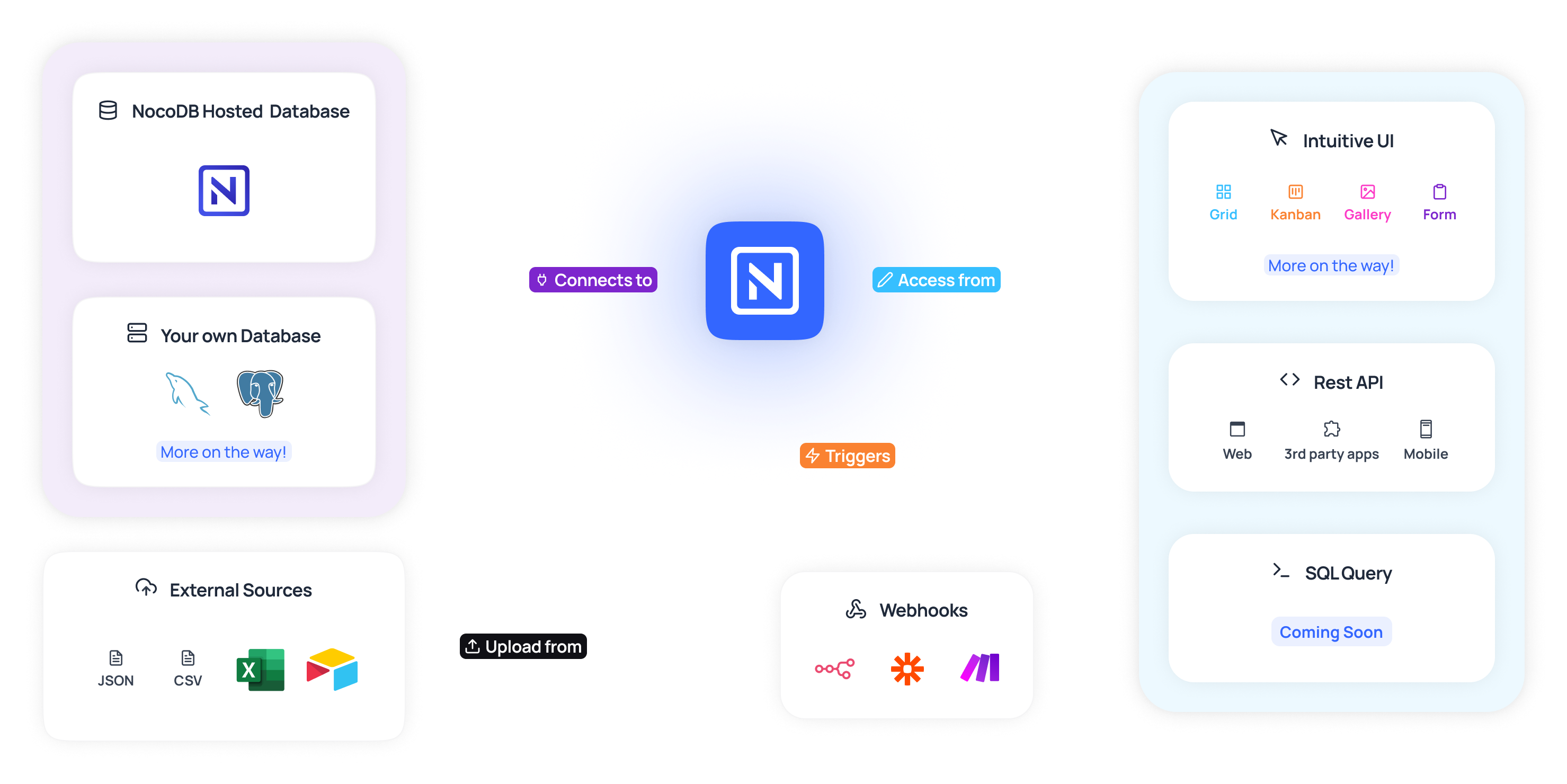No-Code Solutions for Open System Database Production: Build Without Coding Skills
No-Code Solutions for Open System Database Production: Build Without Coding Skills
Blog Article
Exploring the Benefits of Scalable Databases That Require No Coding Abilities for Efficient Data Monitoring Solutions
The introduction of scalable data sources that eliminate the need for coding abilities provides a transformative opportunity for organizations looking for effective data management services. By allowing non-technical customers to harness the power of information with user-friendly interfaces, these systems improve accessibility and foster collaboration throughout diverse teams. Furthermore, their cost-effectiveness and versatility to evolving service needs can dramatically improve operational procedures. As we take into consideration the implications of such developments, it comes to be crucial to examine exactly how they can reshape the landscape of information administration and drive lasting development in an affordable environment.
Boosted Ease Of Access for Individuals
Improved availability for customers is a crucial element of scalable databases, making sure that data administration systems are instinctive and user-friendly. In a period where data-driven decisions are paramount, ease of access permits a bigger variety of customers, including those without comprehensive technological expertise, to engage with data source systems properly. This democratization of data accessibility helps with enhanced partnership across divisions, encouraging workers to remove understandings and make notified decisions.
User-friendly user interfaces, such as drag-and-drop features and visual information representation, simplify complicated data communications. These enhancements decrease the understanding contour connected with conventional database management, making it possible for individuals to focus on leveraging information as opposed to grappling with technological intricacies. Additionally, scalable data sources often include real-time analytics and adjustable dashboards, providing users with immediate insights customized to their certain demands.

Cost-Effectiveness and Source Financial Savings
Effective information administration not only depends upon ease of access but additionally on cost-effectiveness and resource savings. Scalable data sources developed for customers without coding skills considerably decrease financial worries generally associated with typical data source monitoring systems. By eliminating the requirement for specialized programming competence, organizations can allocate their sources a lot more efficiently, concentrating funds on core organization tasks as opposed to extensive training or working with experienced personnel.
In addition, these databases frequently make use of cloud-based solutions, which additionally decrease costs associated with hardware and upkeep. Organizations can scale their database remedies according to their needs, staying clear of the costs incurred from over-provisioning sources. This versatility means organizations can adapt to changing needs without sustaining unnecessary prices, leading to significant long-lasting financial savings.
Furthermore, easy to use user interfaces streamline information entrance and monitoring processes, lowering the time invested in administrative jobs. This performance translates into labor expense savings, enabling teams to focus on calculated efforts as opposed to regular upkeep. Generally, taking on scalable data sources that call for no coding abilities fosters a more cost-effective approach to data management, allowing organizations to maximize their resources while preserving high levels of operational efficiency.
Improved Collaboration Throughout Teams

Moreover, scalable databases promote seamless communication amongst staff member. With user-friendly user interfaces that need no coding skills, staff members can easily produce, customize, and share records or dashboards customized to their specific demands. This democratization of information empowers non-technical individuals to contribute insights, boosting the collaborative atmosphere.
In addition, these databases support simultaneous accessibility, allowing several customers to work on the exact same dataset at the same time. This attribute enhances efficiency, as groups can involve in joint information evaluation without the risk of variation control problems. The capability to leave notes or comments straight within the database further promotes discussion and clarifies information interpretations.
Streamlined Data Management Processes
In today's data-driven environment, companies identify the need of structured data management refines to optimize effectiveness and accuracy. By leveraging scalable databases that call for no coding abilities, organizations can streamline their data handling and decrease the complexities typically associated with traditional data source systems. This access encourages non-technical individuals to engage straight with information, promoting quicker decision-making and minimizing reliance on specialized IT personnel.
Streamlined information monitoring processes enhance workflow by automating regular tasks such as data entrance, validation, and reporting. Automated information assimilation ensures that details from different sources is accumulated effortlessly, getting rid of silos and promoting a merged view of critical business metrics (no-code). User-friendly user interfaces permit employees to control information quickly, enabling them to produce understandings that drive tactical campaigns without the need for substantial training.
This performance not only speeds up functional processes however additionally minimizes the capacity for human mistake, ensuring that data stays trusted and accurate. Eventually, structured information monitoring procedures through scalable databases cause boosted performance, allowing organizations to concentrate on core tasks while guaranteeing that their data administration techniques are effective and reliable.
Scalability for Expanding Services

For expanding ventures, the ability to scale up or down is vital. A scalable database can manage an influx of information generated from new clients, items, or services, making certain that company operations stay undisturbed. In addition, these databases provide the ability to take care of peak tons efficiently, which is click reference crucial during durations of quick growth or seasonal spikes.
Furthermore, numerous scalable database services are developed with easy to use interfaces that require no coding skills, equipping non-technical personnel to manage data effectively (no-code). This democratization of information monitoring allows organizations to allocate resources tactically and reduce reliance on specialized IT workers
Inevitably, adopting a scalable database not just enhances operational efficiency but additionally fosters a setting where companies can advance and introduce without the restrictions of conventional data source systems. This versatility positions companies for lasting success in today's affordable landscape.
Conclusion
In final thought, scalable data sources that require no coding skills supply substantial benefits for efficient data administration. These systems boost ease of news access for non-technical individuals, lower functional costs, and promote partnership throughout groups. By enhancing information management procedures and using scalability for expanding companies, such services make it possible for companies to adapt to changing needs successfully. Inevitably, the adoption of these user-friendly databases promotes development and settings businesses for lasting success in a vibrant setting.
Improved ease of access for customers is an essential aspect of scalable data sources, making sure that information monitoring systems are instinctive and straightforward.User-friendly interfaces, such as drag-and-drop attributes and visual data depiction, streamline intricate information communications. On the whole, taking on scalable data sources that require no coding abilities promotes a much more affordable strategy to information monitoring, making it possible for organizations to optimize their resources while preserving high degrees of operational efficiency.
By leveraging scalable databases that call for no coding skills, businesses can streamline their data handling and reduce the intricacies commonly connected with standard database systems - no-code.Streamlined information management procedures boost process by automating regular tasks such as information entry, recognition, and reporting
Report this page